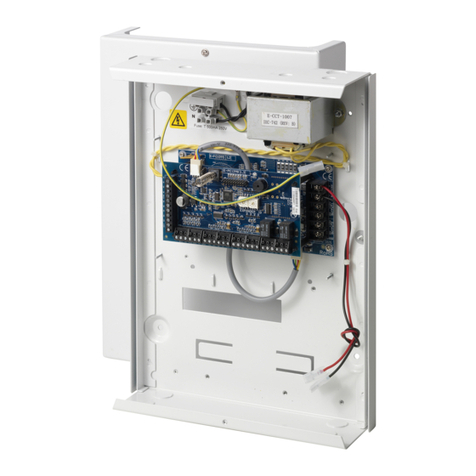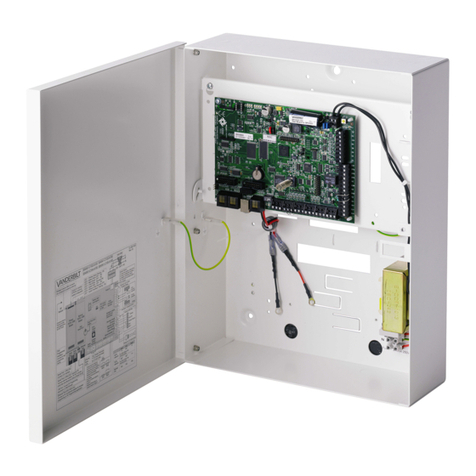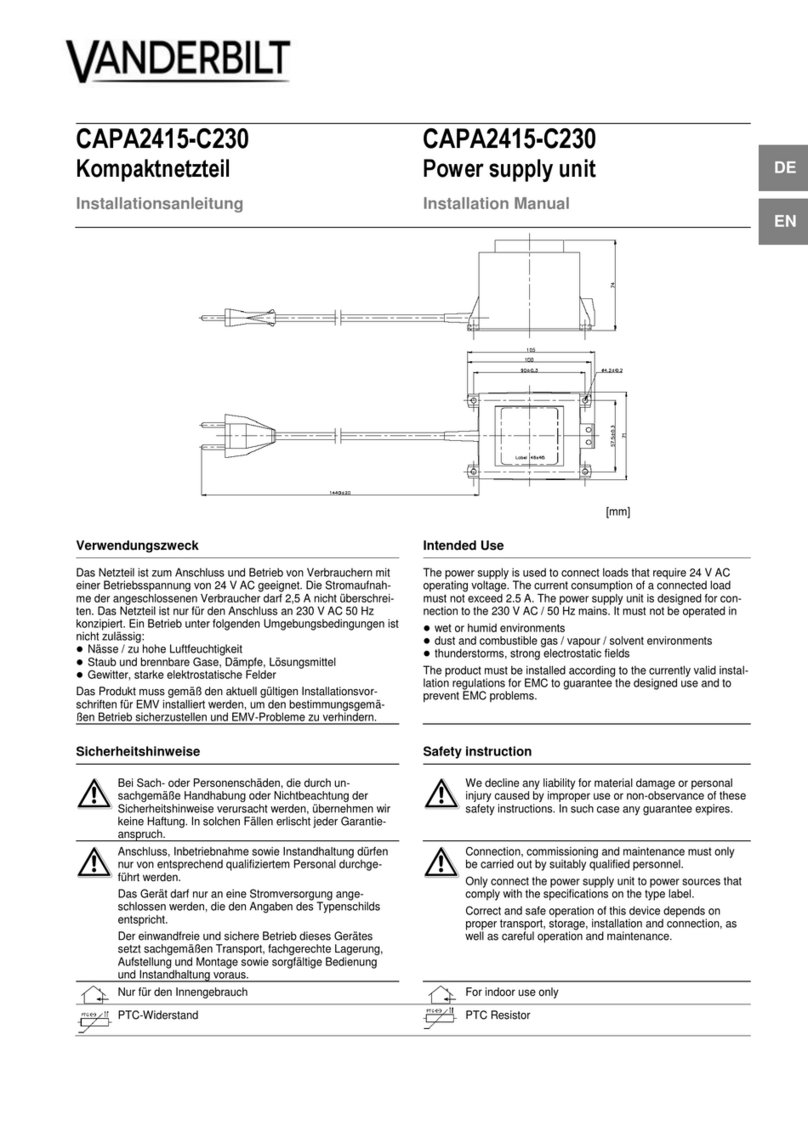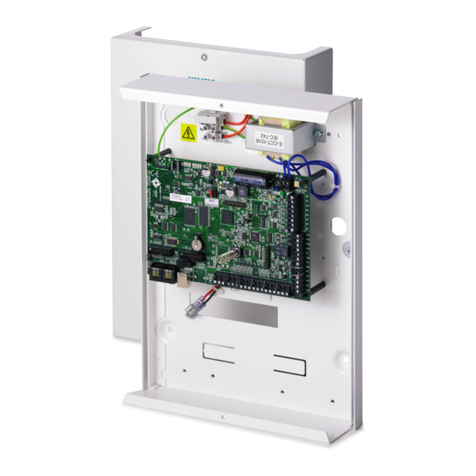7
Doc ID: I200448 - 30th June 2021
Standby Battery
10) Select the Battery type by placing the link (above the Battery fuse) in the appropriate location to
select (17/18 Ah, 38 Ah [Factory set] or 65 Ah) batteries. This changes the maximum bulk charge
current, and therefore enables higher load current to be used when smaller batteries are required.
Put the link on the left hand two pins for 17 Ah, the middle pins for 38 Ah and the right hand two
pins for 65 Ah batteries.
Figure 6 –Standby battery size selection links
11) Mount the appropriate batteries as shown above. Where a dual box solution is used all cabling
between the two boxes should be routed to use separate case entry/exit holes from other cabling
and use suitable bushes to protect the cables.
12) Connect the two 12 V standby batteries in series using the single cable provided. Connect the
negative of one battery to the positive of the other. DO NOT CONNECT the other two battery
terminals to each other.
13) Connect the free Positive and Negative terminals of the batteries to the PCB terminals Batt+ and
Batt - using the cables provided. See Figures 4 & 5.
14) Connect the battery temperature sensor (two white wires) to the PCB terminals TMP Sens. See
Figure 5.
15) If the batteries are housed remotely, replace the battery lead assembly (including battery
temperature sensor) with an extended length assembly, provided with the Battery box (Ensure the
temperature sensor and battery connections are made according to figure 5.
16) Re-apply the mains power and verify that the yellow Fault LED stops flashing after about 20 s
(battery connection detected). Verify that the remote GEN PSU Fault monitor shows a closed
contact.
17) Disconnect the mains power. Verify that the green Mains LED extinguishes and the yellow Fault LED
starts to pulse (indicating that the PSU is running from its standby batteries).
18) If connected, verify that the EPS Fault monitor shows an open contact and the PSU Fault monitor
shows a closed contact.
19) Perform a full functional test of system including full alarm condition. Verify that the standby
batteries can support the system load. Note: ensure batteries have sufficient charge.
Final
20) Reconnect the mains. Verify that the green Mains LED illuminates and the yellow Fault LED
extinguishes.
21) If connected, verify that the EPS Fault monitor shows a closed contact and the GEN PSU Fault
monitor shows a closed contact.
22) Close cover and secure using fastening screws provided.
Tamper Connection
1) Once the enclosure has been fixed to the wall, insert the 3mm x 10mm stud from the “L” shaped
taper bracket to the tamper switch. Offer the M4 x 33mm screw to the 5mm diameter hole to the left-hand
side of the top right hand mounting hole.
2) Once the M4 screw is located in the 5mm hole, continue to tighten the screw until the screw is
secured against the rear wall.
3) Ensure the tamper micro-switch is secured and test to verify correct operation of the tamper contact
for the opening of the lid and removal from the wall.
































